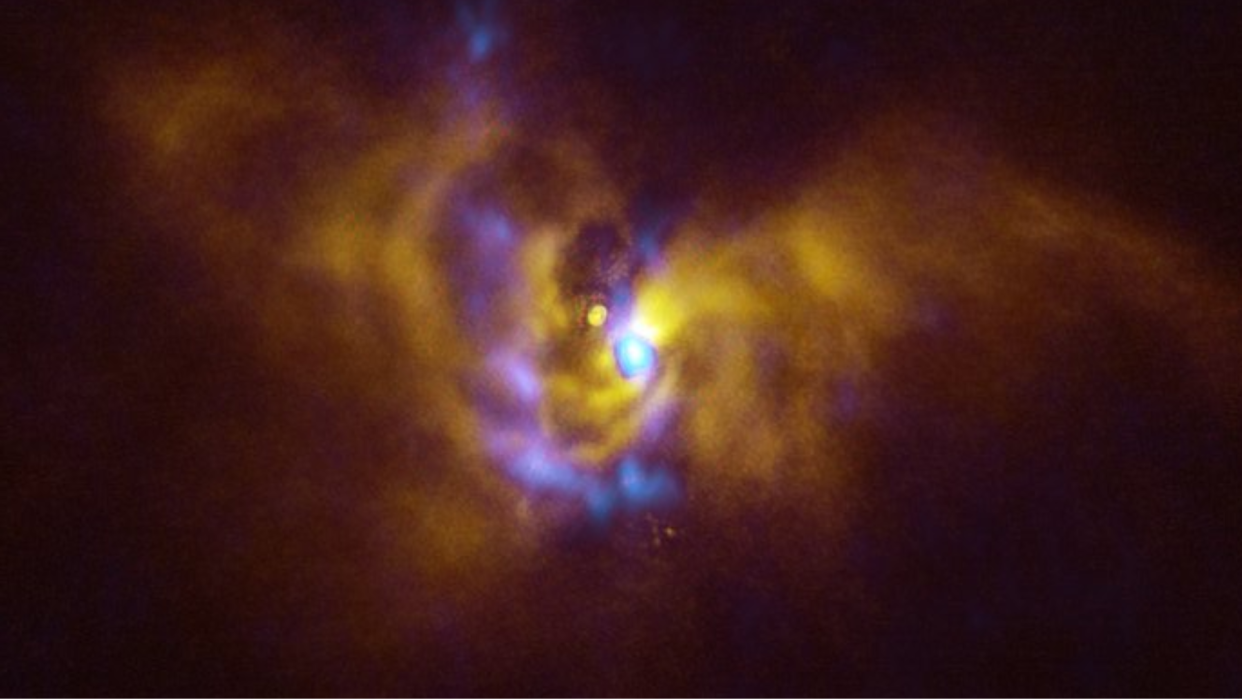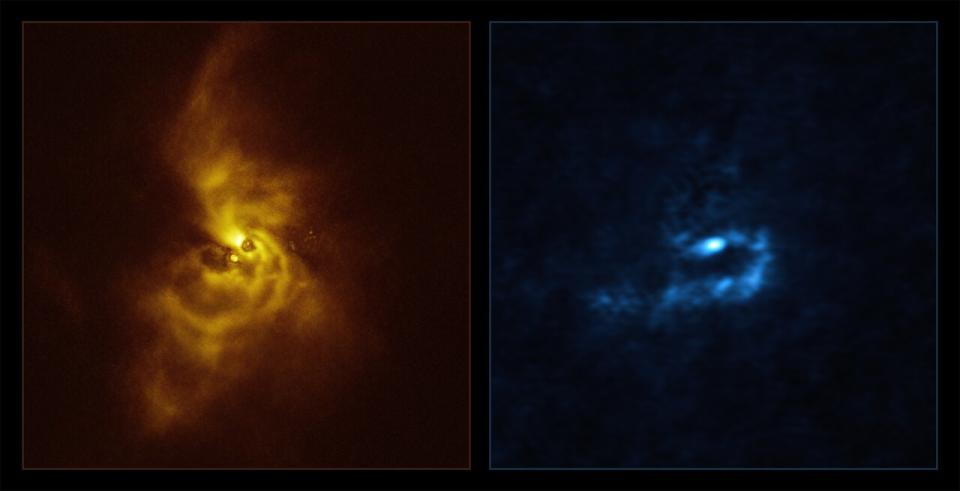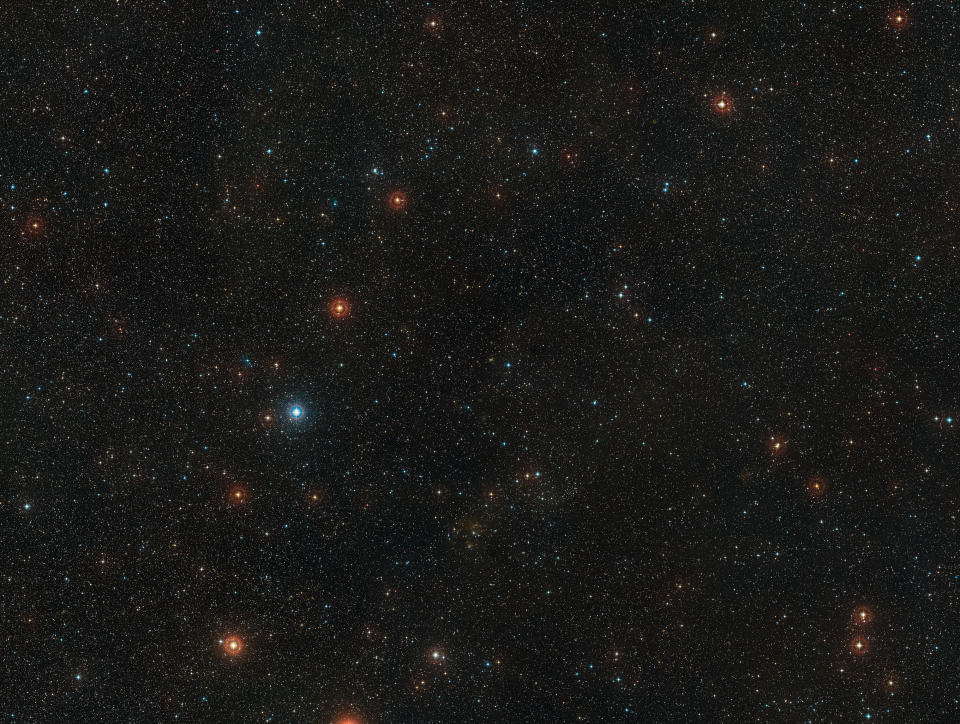Stunning image reveals 1st detection of gas giants being born around a young star (photo)

Astronomers have caught a glimpse of a stunning cosmic "phoenix" that represents a planetary system in the making.
Just like the mythological phoenix represents rebirth from fiery destruction, this cloud resembling a flaming cosmic bird may signify the birth of a gas giant planet from clumps of material gathered around a star that was recently born from the ashes of an earlier long-dead star. The study of dusty clumps around the star designated V960 Mon and located around 5,000 light-years away and the constellation of Monoceros could reveal how gas giant planets like Jupiter are born.
"This discovery is truly captivating as it marks the very first detection of clumps around a young star that have the potential to give rise to giant planets," Universidad Diego Portales, Chile, Alice Zurlo, part of the team behind the observations, said in a statement.
Related: 1st evidence found for 'Trojan planet' worlds occupying same orbit
The gold and blue image of the material around V960 Mon, which glows bright blue at the heart of the golden "wings" of gas and dust around it, was created with combined observations from the Very Large Telescope (VLT) and Atacama Large Millimeter/submillimeter Array (ALMA).
Witnessing the birth of a planetary system
Astronomers first turned their attention to the young star in 2014 when it unexpectedly brightened by about 20 times its usual magnitude. Observations with the VLT instrument Spectro-Polarimetric High-contrast Exoplanet REsearch (SPHERE) observations were taken shortly after this outburst of brightness, with the instrument able to catch an unprecedented level of detail in the system.
This showed material orbiting V960 Mon is forming a series of intricate spiral arms that stretch for distances greater than the entire solar system.

This finding was followed up when astronomers observed V960 Mon with ALMA. While the VLT and SPHERE were able to look at the surface details of the clumps of dust and gas, ALMA could look deeper, revealing the inner structure of the system to astronomers and, in the process, the mechanism by which V960 Mon could be forming planets.
"With ALMA, it became apparent that the spiral arms are undergoing fragmentation, resulting in the formation of clumps with masses akin to those of planets," Zurlo said.

Astronomers suggest two avenues that gas giant planets could take to form. The first is core accretion, which sees dust grains gather to cover a rocky inner core. The second is gravitational instability, in which over-dense patches of a protoplanetary disk of gas and dust around a star collapse.
Scientists have seen hints at core accretion before, but the combined images from ALMA and SPHERE give astronomers a hint at the first observational evidence for this latter gas giant formation mechanism.
"No one had ever seen a real observation of gravitational instability happening at planetary scales — until now," researcher leader and University of Santiago, Chile, scientist Philipp Weber said.
RELATED STORIES:
— James Webb Space Telescope spies water near center of planet-forming disk in cosmic 1st
— 400 Earth-size rogue planets could be wandering the Milky Way
— 1st evidence found for 'Trojan planet' worlds occupying same orbit
The team intends to further study this planetary system in the making with the forthcoming Extremely Large Telescope (ELT) currently under construction in the Atacama Desert region of Northern Chile. The ELT should be able to reveal details of V960 Mon hidden even to the VLT and ALMA, including the chemical composition of the clumps of matter around the star.
"Our group has been searching for signs of how planets form for over ten years, and we couldn’t be more thrilled about this incredible discovery," team member and University of Santiago, Chile, researcher Sebastián Pérez said.
